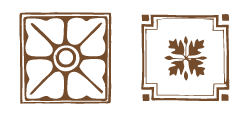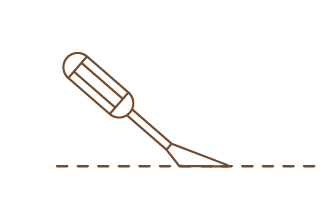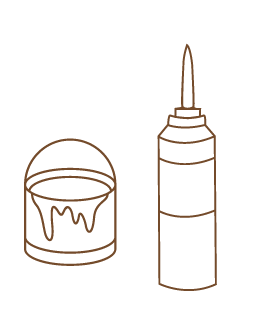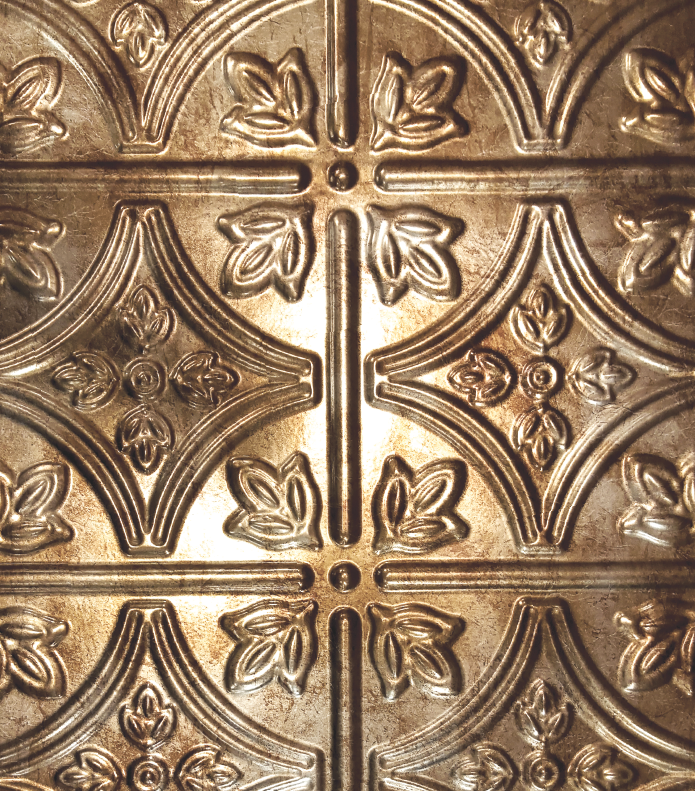Tin tiles add a touch of turn-of-the-century class and are easy to install yourself
We were so inspired by interior designer Hannah Hacker’s creativity that we decided to explore more options. Pressed tin ceilings were popular in homes beginning in the late 1800s. Although tin tile is a traditional building material, it offers a lot of versatility for today’s creative homeowner. Here is a basic overview for using it as a unique kitchen backsplash.
1. Pick a pattern

2. Brainstorm a finish

If going for a basic metal, choose one that mixes or matches nicely with the room’s existing finishes. Or, consider painting unfinished tiles with a custom color or treating it to a decorative metallic finish. The options are truly endless.
3. Measure

Measure the space to be covered to calculate an overall square footage. When ordering, include at least one extra tile to ensure complete coverage with cuts.
4. Cut

Clean the wall surface and remove switch plates. Pick a starting point for the design and mark it on the wall. Make any necessary cuts to the panel with tin snips, accounting for cabinets or switch plates. Watch out for sharp edges.
5. Install

Apply construction adhesive to the back of the tile, both around the edges and toward the center. (Make sure your product is meant to be used with construction adhesive before this step and always follow manufacturer instructions.) Press the tile to the wall, smoothing so that the entire surface makes contact and holds. Keep the pattern consistent throughout. To finish, the factory edges will require caulk for sealing seams. Apply molding to conceal conspicuous cut edges.









